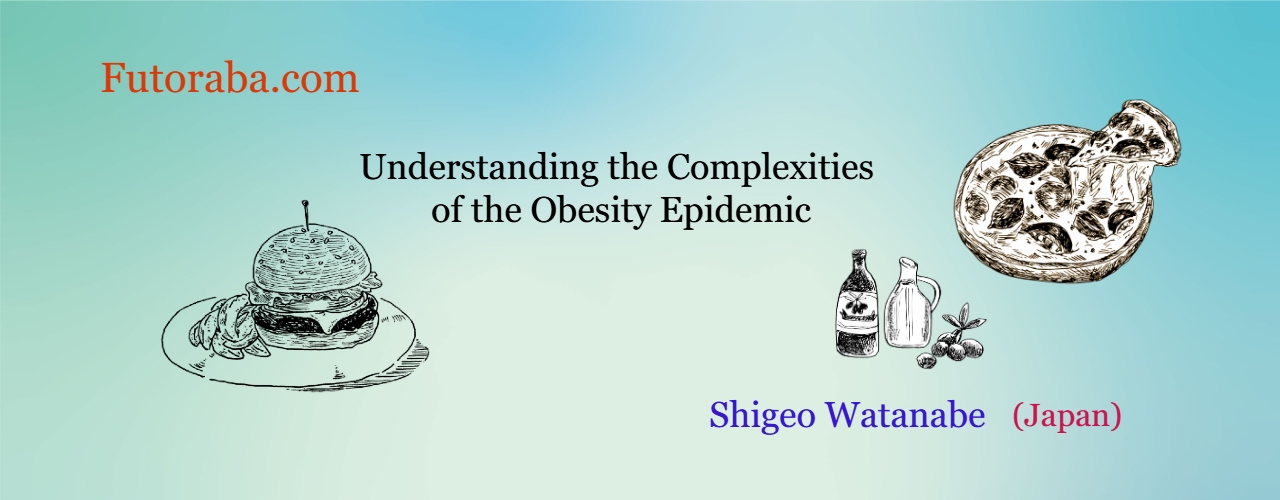Topics
10/15/2021
The Combination of Undernutrition and Obesity Among the Poor Can be Possible
Contents
- The case of undernutrition and obesity
- What should we do?
- Being underweight and being overweight can coexist: My thoughts
Most of the parts of this article are citations from a book, but at the end of this article, I will explain how it is related to my experience.
[Related article] → Wealthy Ones Get Fat? Poor Ones Get Fat?
1. The case of undernutrition and obesity
"This combination of obesity and malnutrition or undernutrition (not enough calories) existing in the same populations is something that authorities today talk about as though it were a new phenomenon, but it's not. Here we have malnutrition or undernutrition coexisting with obesity in the same population eighty years ago.
(Gary Taubes. Why We Get Fat. New York: Anchor Books. 2011. Page 24.)
(In the mid-1930s, New York City)
In 1934, a young German pediatrician named Hilde Bruch moved to America, settled in New York city, and was 'startled,' as she later wrote, by the number of fat children she saw—'really fat ones, not only in clinics, but on the streets and subways, and in schools. '(*snip*)

But this was New York City in the mid-1930s. This was two decades before the first Kentucky Fried Chicken and McDonald's franchises, when fast food as we know it today was born. This was half a century before supersizing and high-fructose corn syrup.
More to the point, 1934 was the depths of the Great Depression, an era of soup kitchens, bread lines, and unprecedented unemployment.
One in every four workers in the United States was unemployed. Six out of every ten Americans were living in poverty. In New York City, where Bruch and her fellow immigrants were astonished by the adiposity of the local children, one in four children were said to be malnourished. How could this be?(*snip*)
It was hard to avoid, Bruch said, the simple fact that these children had, after all, spent their entire lives trying to eat in moderation and so control their weight, or at least thinking about eating less than they did, and yet they remained obese."
(Taubes. Why We Get Fat. Pages 3, 4.)
(The case of a native American tribe, the Sioux, in 1930's)
"Two researchers from the University of Chicago studied Native American tribe, the Sioux living on the South Dakota Crow Creek Reservation. These Sioux lived in shacks 'unfit for occupancy,' often four to eight family members per room. Fifteen families, with thirty-two children among them, lived “chiefly on bread and coffee.” This was poverty almost beyond our imagination today.
Yet their obesity rates were not much different from what we have today in the midst of our epidemic: 40 percent of the adult women on the reservation, more than a quarter of the men, and 10 percent of the children, according to the University of Chicago report, 'would be termed distinctly fat.'

But the researchers noted another pertinent fact about these Sioux: one-fifth of the adult women, a quarter of the men, and a quarter of the children were 'extremely thin.'
The diets on the reservation, much of which, once again, came from government rations, were deficient in calories, as well as protein and essential vitamins and minerals. The impact of these dietary deficiencies was hard to miss: 'Although no counts were taken, even a casual observer could not fail to note the great prevalence of decayed teeth, of bow legs, and of sore eyes and blindness among these families.'"
(Taubes. Why We Get Fat. Pages 23-4.)
(In the slums of São Paulo, Brazil)
"This is from a 2005 New England Journal of Medicine article, ''A Nutrition Paradox-Underweight and Obesity in Developing Countries,' written by Benjamin Caballero, head of the Center for Human Nutrition at Johns Hopkins University.
Caballero describes his visit to a clinic in the slums of São Paulo, Brazil.

The waiting room, he writes, was 'full of mothers with thin, stunted young children, exhibiting the typical signs of chronic undernutrition.
Their appearance, sadly, would surprise few who visit poor urban areas in the developing world. What might come as a surprise is that many of the mothers holding those undernourished infants were themselves overweight.'(*snip*)

If we believe that these mothers were overweight because they ate too much, and we know the children are thin and stunted because they're not getting enough food, then we're assuming that the mothers were consuming superfluous calories that they could have given to their children to allow them to thrive.
In other words, the mothers are willing to starve their children so that they themselves can overeat. This goes against everything we know about maternal behavior. (*snip*)
Caballero then describes the difficulty that he believed this phenomenon presents: ''The coexistence of underweight and overweight poses a challenge to public health programs, since the aims of programs to reduce undernutrition are obviously in conflict with those for obesity prevention.'
Put simply, if we want to prevent obesity, we have to get people to eat less, but if we want to prevent undernutrition, we have to make more food available. What do we do?"
(Taubes. Why We Get Fat. Pages 30-1.)
2. What should we do?
"In the early 1970s, nutritionists and research-minded physicians would discuss the observations of high levels of obesity in these poor populations, and they would occasionally do so with an open mind as to the cause. (*snip*)

Here's Rolf Richards, the British-turned-Jamaican diabetes specialist, discussing the evidence and the quandary of obesity and poverty in 1974, and doing so without any preconceptions: "It is difficult to explain the high frequency of obesity seen in a relatively impecunious [very poor] society such as exists in the West Indies, when compared to the standard of living enjoyed in the more developed countries.
Malnutrition and subnutrition are common disorders in the first two years of life in these areas, and account for almost 25 per cent of all admissions to pediatric wards in Jamaica. Subnutrition continues in early childhood to the early teens. Obesity begins to manifest itself in the female population from the 25th year of life and reaches enormous proportions from 30 onwards.'

When Richards says 'subnutrition,' he means there wasn't enough food. From birth through the early teens, West Indian children were exceptionally thin, and their growth was stunted. They needed more food, not just more nutritious food. Then obesity manifested itself, particularly among women, and exploded in these individuals as they reached maturity.
This is the combination we saw among the Sioux in 1928 and later in Chile— malnutrition and/or undernutrition or subnutrition coexisting in the same population with obesity, often even in the same families. (*snip*)
Referring to obesity as a 'form of malnutrition' comes with no moral judgments attached, no belief system, no veiled insinuations of gluttony and sloth. It merely says that something is wrong with the food supply and it might behoove us to find out what.(*snip*)
Again, the coexistence of underweight and overweight in the same populations and even in the same families doesn't pose a challenge to public-health programs; it poses a challenge to our beliefs about the cause of obesity and overweight."
(Taubes. Why We Get Fat. Pages 29-32.)
3. Being underweight and being overweight can coexist: My thoughts
<About undernutrition and overweight>
First, I would like to explain, based on my experience, that the coexistence of undernutrition and obesity are not contradictory messages.
I repeat that when I was very thin, under forty kilograms, at first, I was eating high-calorie foods such as deep-fried foods or sweet, but I couldn’t gain weight. And then, I realized that I could gain weight by digesting all the foods in my whole intestines and inducing intestinal starvation.
The easiest way to induce intestinal starvation was to eat digestible refined carbohydrates (rice, white bread, noodles, starches, etc.) and a little easy-to-digest protein (and not to eat other foods), but since it lacked energy and essential nutrients for my body, I felt dizzy from the undernutrition.

If I ate eggs, vegetables, beans, or fish, or drank milk to add more essential nutrients, though the nutritional profile was better, I couldn’t gain any weight. For me, it was because I couldn’t digest them well.
IIn short, a higher ratio of digestible refined carbohydrates in the meals and eating fewer fibrous vegetables, fat, and other indigestible foods are more likely to induce intestinal starvation and cause one’s set-point weight to increase.
It’s probably certain that a deficiency of vitamins and/or minerals can cause illnesses, but being overweight is not contradicting being in a state of undernutrition.
<About the coexistence of being underweight and overweight>
Getting back to what Caballero refered to, even if people eat similar foods in the same group, it may lead to a different result in the body.
Some people who digested all the foods in their whole intestines may have gained weight—which means their set-point weight went up by intestinal starvation— and ended up becoming overweight.
However, those who were not able to digest all the foods in their whole intestines remained underweight. I believe that leaving Just a little bit of undigested food in the intestines makes it hard to induce intestinal starvation. (Being extremely thin can cause poor digestion, so it makes it even harder for them to induce intestinal starvation.) A small difference sometimes makes a big difference in the end result.

To sum up, what happened in the groups in poverty situations is a similar phenomenon that is happening in our modern society.
When someone doesn't eat much and is fat, we tend to assume that they are inactive or have a slow metabolism. And when someone who eats a lot but is thin, we tend to assume that they are active or have a fast metabolism.
Most researchers just try to fit everything into the theory that “fat people eat too much or are physically inactive” for some reason.
However, if we look at these ideas I’ve presented with an open mind, we can say that this is the same phenomenon as the "coexistence of thin and obese" in the same population.
At the risk of repeating myself, being overweight is not necessarily the consequence of overeating.

